By Weiming Lake, he rests in peace…
The grand Ceremony Marking the Centenary of the Communist Party of China was held at the Tian’anmen Square the morning of July 1. General Secretary of the CPC Central Committee, President of the People’s Republic of China, and Chairman of the PRC Central Military Commission Xi Jinping delivered an important speech.
Xi Jinping pointed out that the founding of a communist party in China was an epoch-making event, which profoundly changed the course of Chinese history in modern times, transformed the future of the Chinese people and nation, and altered the landscape of world development.
85 years ago, an American journalist Edgar Snow was eager to visit northern Shaanxi, the soviet district, to see what the Communist Party was really like. He arrived in the Revolutionary Base of Northern Shaanxi and wrote about his own experience in Red Stars Over China. By running these news stories, he extended an olive branch of peace and justice, covering the real stories of China and informing the world.
When chairing the 30th group study session of the Political Bureau of the 19th CPC Central Committee, General Secretary Xi Jinping stressed that better telling China’s stories and developing China’s voice to present a true, multi-dimensional and panoramic view of China is an important task in improving the country’s capacity for engaging in international communication.
Edgar Snow lies at rest by Weiming Lake. He was the friend of the Chinese people for life. His tombstone on the campus of Peking University is a testament to his indissoluble bond with Yan Yuan (campus of Peking University) and China, connecting the past and future of the great Communist Party of China!
⇣ Click the video to get closer to the old friend of Chinese people ⇣
⇣ Click the video to see the inside story of Edgar Snow’s meeting with Mao Zedong ⇣
On the small hill opposite to the Gate of “Ci Ji Temple” on the southern bank of Weiming Lake, there is a rectangular tombstone made of white marble. It is engraved with the golden inscription “In Memory of Edgar Snow, An American Friend of the Chinese People” (in Chinese) by Ye Jianying, with English translation below. On the grassy lawn, the tomb is surrounded by dense pine and cypresses, with winding stone paths nearby and the lake rippling. The quiet place presents a solemn picture.
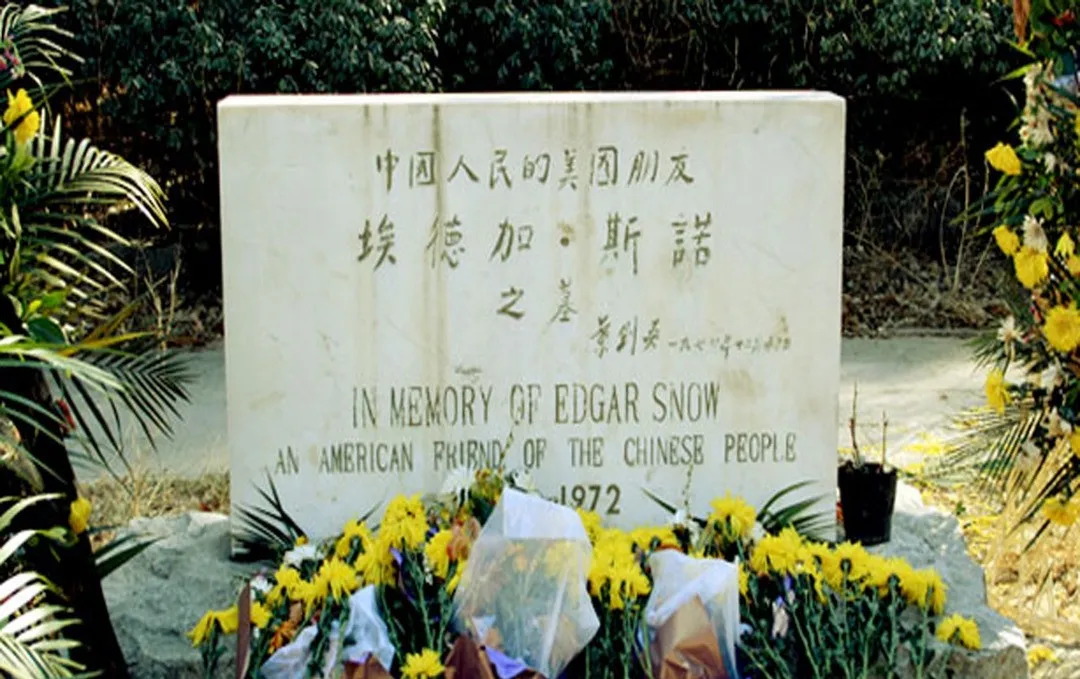
Here rests Edgar Snow (1905-1972), a well-known American writer and journalist, and an old friend of Chinese people. He was the first foreign reporter to enter the northern Shaanxi soviet district to conduct in-depth interviews and comprehensively cover the true picture of the Communist Party of China and the Red Army of Workers and Peasants to the rest of the world. He wrote Red Star Over China.
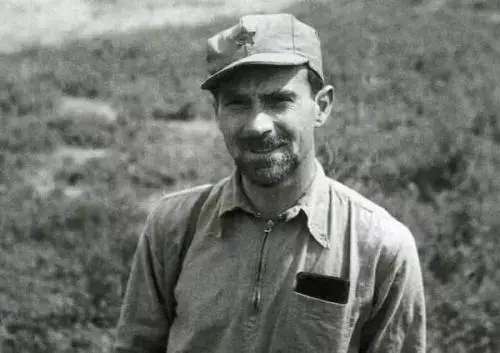
Edgar Snow
In 1973, part of Edgar Snow’s ashes was buried on the bank of Weiming Lake. As he said before he died, “I loved China, I should like part of me to stay there after death as it always did during my life.”
01 Seeing the Real Picture of China
After graduating from the School of Journalism at the University of Missouri in 1928, Snow arrived in Shanghai, China, and took a job at The China Weekly Review, starting his career as a journalist. The 23-year-old young man liked adventure and travel.
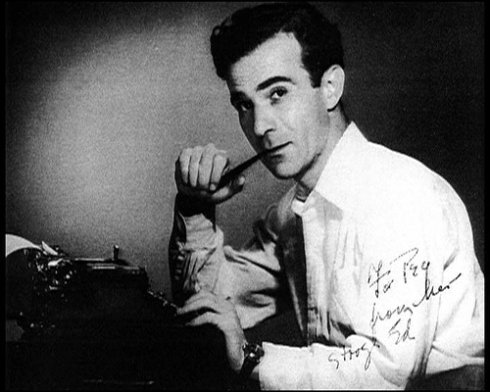
Edgar Snow
In 1929, Snow did interview trips along the railway. In July, he arrived in Peiping for the first time. Although he had a short stay there, he was deeply impressed by the golden glazed roofs, the gray marble altars, the temples shaded by pine and cypresses, and the tall and dense locust trees. The vermilion palace wall people used to call was described by Snow as a romantic rose color.
In 1931, Snow and Helen Foster, an American girl in Shanghai, fell in love at first sight. Their wedding was held on Christmas Day in 1932. In 1933, Snow was named the representative of the “Unified Press Association” of United States in Peiping. He went to the city with his wife Helen, settling down at No. 21 Meizha Alley.
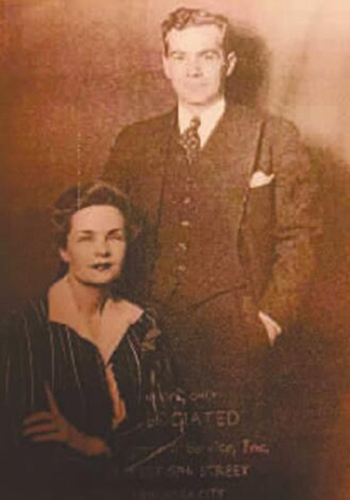
Edgar Snow and his wife Helen Foster Snow
As a journalist, Snow observed the professional ethics of seeking the real truth and facts and adhering to the mission of justice. He often went out for interviews and contributed to the “Unified Press Association”; in the meantime, he avidly read various kinds of books and newspapers to learn different aspects of China’s politics, economy, diplomacy, culture, and history, and studied the reality of China, living a kind of life “somewhere between journalism and academics”.
At the beginning, Snow could only read second-hand English-language materials. But as he was worried that these materials were not presenting a comprehensive and reliable picture, he didn’t want to be affected by any biased views. So he decided to learn Chinese. When he mastered nearly 1,500 Chinese characters, he was overjoyed, “It enables me to read some works in vernacular Chinese. I am not ‘blind’ anymore.”
In early 1934, as a US journalist in China, Snow was invited to work as a lecturer at the Department of Journalism at Yenching University, teaching courses such as “feature writing” and “travel communication”. He invited Xiao Qian, who was studying at the Department of Journalism, to join him in compiling Living China: Modern Chinese Short Stories. He became a very popular figure among students. The Snows moved house to live at a place near the university. Many Chinese and foreign students, teachers, and journalists lived near Snow’s new residence. They often gathered at Snow’s residence to discuss current affairs and do academic research.
02 His Small Living Room and the December Ninth Movement
Snow’s home was affectionately referred to as “a window to the fresh air” by the progressive students.
Hired as a freelance journalist by New York Sun and the London Daily Herald in the summer of 1935, Snow quit the teaching job at Yenching University, but he did not cut off the connections with the progressive students.

Snow’s residence at Yenching University
After the “September 18th” Incident, Japanese imperialists stepped up their aggression against China. “Although North China is large, there is no room here for us to study quietly and peacefully.” The anti-Japanese anger of the patriotic students erupted like a volcano.
Back then, the small living room of Snow’s house became a venue for the planning of the “December Ninth” Movement. Progressive students discussed the specific steps of the demonstration at Show’s house, and informed the Snows of the route and gathering place.
On December 9, 1935, thousands of college and high school students of Peiping took to the streets for a demonstration to resist Japanese aggression in an effort to save the country. Foreign reporters contacted by the Snows covered the demonstration and conducted interviews, hoping to guide the public opinion in support of the students’ movement.
After this movement, Snow became eager to visit the Northern Shaanxi soviet district in the hope of seeing what the real Communist Party was like. He wrote in the book:
Fighting in the very heart of the most populous nation on earth, the Celestial Reds had for nine years been isolated by a news blockade as effective as a stone fortress. A wall of thousands of enemy troops constantly surrounded them; their territory was more inaccessible than Tibet.
Even the simplest points about the Red Army were disputed.
Could one foreign neck be better hazarded than in an effort to discover why?
03 Opening the Gate of the Red Revolutionary Areas
In 1936, with the coordination and help of Soong Ching Ling, Snow got the opportunity to go to Northern Shaanxi for interviews. A letter of introduction written in concealed ink to Mao Zedong, Chairman of the Soviet government, was delivered to Snow after some twists and turns, telling him to first go to Xi’an, where someone would escort him to Northern Shaanxi.
Snow was ecstatic when receiving the letter. Taking a camera, video camera, films and notebooks, as well as common medicines and daily necessities, he boarded the train to the west. He wrote in the book:
Peking wore the green lace of spring, its thousands of willows and imperial cypresses making the Forbidden City a place of wonder and enchantment.
In July that year, Snow arrived in Northern Shaanxi. The soldiers and civilians of the soviet district warmly welcomed the American friend and presented him with a gray Red Army uniform. Snow could hardly believe that the door of China’s red area was so readily open to a foreign journalist, but he soon felt the sincerity of the Communist Party of China.

Snow’s schedule in Northern Shaanxi
As soon as Snow arrived in Baijiaping, he met an officer, who greeted Snow in English in a kindly and elegant tone. Snow immediately realized that the man standing in front of him was the “notorious” Red commander Zhou Enlai (Chou En-lai). He wrote in the book:
Slender and of medium height, with a slight wiry frame, he was boyish in appearance despite his long black beard, and had large, warm, deep-set eyes.
A certain magnetism about him seemed to derive from a combination of personal charm and assurance of command.
His mildly uttered statements made a singular contrast against the background of nine years of defamation of the Communists by Kuomintang propaganda describing them as “ignorant bandits,” “marauders,” and by other choice epithets.
Zhou Enlai told Snow, “We will welcome any journalist who comes to see the soviet districts. You can write about anything you see and you will be given every help to investigate the soviet districts.”
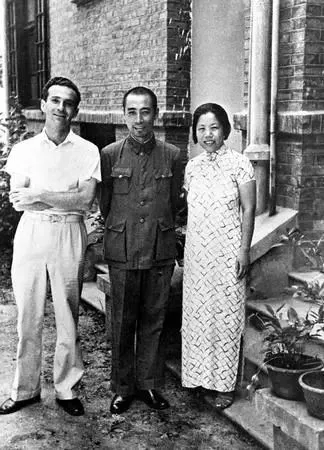
Zhou Enlai and Deng Yingchao with Snow at Luojia Mountain in Wuchang in 1938
After leaving Baijiaping, Snow came to Bao’an, where he had conversations with Mao Zedong night after night in the loess cave dwellings. They were talking about the situation of the war of resistance against Japanese aggression, the proposition of establishing the Chinese United Front against Japanese Aggression, the foreign policy of the Communist Party of China, etc.
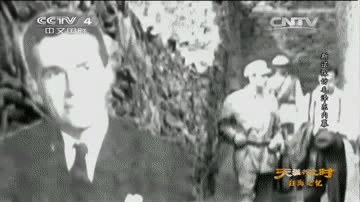
With such exchanges and discussion, Snow got to know more about Mao Zedong. He not only witnessed the leader’s wisdom, but also saw the simple life of a Communist Party member. He wrote:
Mao lived with his wife in a two-room yao-fang with bare, poor, map-covered walls.
The Maos’ chief luxury was a mosquito net. Otherwise Mao lived very much like the rank and file of the Red Army.
Mao’s food was the same as everybody’s, but being a Hunanese he had the southerner’s ai-la, or “love of pepper.” He even had pepper cooked into his bread. Except for this passion, he scarcely seemed to notice what he ate. One night at dinner I heard him expand on a theory of pepper-loving peoples being revolutionaries.

Snow with Mao Zedong
One day, Mao Zedong told Snow that he could go to the front for interviews. Snow asked Mao Zedong whether he could take a picture of Mao since he had taken pictures of more than 400 people. Mao Zedong did not wear a hat usually. When taking the picture, Snow put his red-star octagonal cap on Mao Zedong’s head. Then we see a precious picture.


Mao Zedong’s picture taken by Snow in Bao’an, Northern Shaanxi in 1936
Before setting off, Snow was already very interested in the Red Army’s Long March. He wrote:
Who were these warriors who had fought so long, so fiercely, so courageously, and, on the whole so invincibly? What made them fight like that? What held them up? What was the revolutionary basis of their movement? What were the hopes and aims and dreams that had made of them the incredibly stubborn warriors?
Snow finally found the answer after arriving in Northern Shaanxi. During the 368-day march, the morale and political will of the Red Army remained as strong as ever. The Communists always firmly believed that they were marching towards the frontier the fight against Japanese aggression and the very survival of the country depended on them.
In Snow’s view, “this mass migration was the biggest armed propaganda tour in history.” His report on the Red Army’s Long March caused a sensation in the West, making the Red Army’s Long March a symbol of heroism.
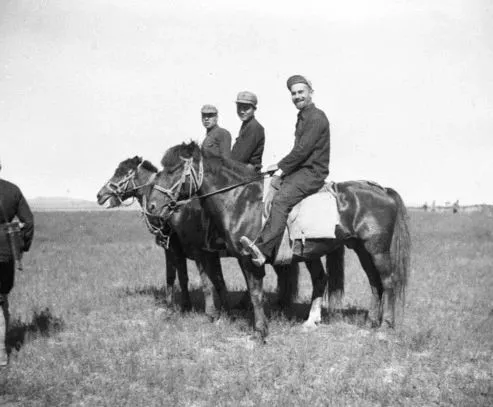
Snow (first from right) during an interview in Northern Shaanxi in 1936
At the end of October 1936, Snow returned home safely with thirty rolls of films and countless records. His wife Helen saw him “unshaven, tired and hungry, he was eager to take cigarettes, coffee, eggs, and milk, but he was triumphant and grinning, just like a cat swallowing a canary.”
As soon as he returned to Peiping, Snow enthusiastically introduced his experience in Northern Shaanxi to the progressive students. At Linhuxuan of Yenching University he showed the films, slides and photos he had taken reflecting life in the Soviet district, enabling the young people in the Kuomintang-controlled areas to see “China under the Red Flag” for the first time.
Subsequently Snow decided to “live in seclusion”, combing through the interview materials and immersing himself in writing. He completed a 300,000-word long reportage Red Star Over China in a few months. Thanks to the hard work of patriotic intellectuals, the manuscripts were translated into Chinese. Renamed, banned, and destroyed several times, the manuscripts were still circulated among patriots, motivating a large number of patriotic youths to go to Yan’an and embark on the road of revolution.
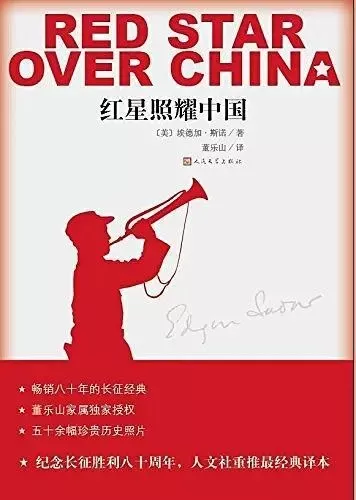
The book Red Star Over China
Red Star Over China introduced to the world the truth about the revolutionary base led by the Communist Party of China, breaking the slander and defamation against the Communist Party of China and the Red Army by reactionary forces at home and abroad. The book attracted international anti-fascist fighters such as Norman Bethune who traveled all the way to China in support of the Chinese people’s resistance to Japanese aggression, and foreign journalists such as Israel Epstein, who came to the country to show the world what they really saw, heard, and thought.

Mao Zedong expressed his comments and appreciation for Snow during an interview with a German journalist in 1938.
“When the whole world had forgotten us, Snow came to see us and told the world what had happened. We will remember Snow's great help to China forever.”
Norman Bethune wrote, “You ask me why I went to China. Please read Edgar Snow's Red Stars Over China. Then you will feel the same way.”
04 Always A Friend of the Chinese People
After the founding of the People’s Republic of China, Snow did not stop following the development of China. He conveyed the information of the real situation of the People’s Republic of China and the thinking of the country’s decision makers to the American government and people, engaging in the new mission of bridging the gap between China and the US.
Snow visited China three times in 1960, 1964, and 1970 respectively. During the visits, he tirelessly revisited every inch of land he had set foot on, witnessing and faithfully recording the remarkable changes in China. He showed the world the most populous country on earth was conducting national building independently.
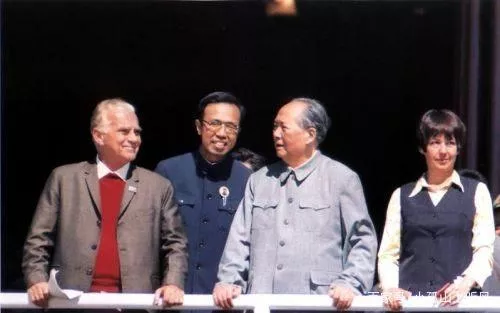
Mao Zedong invited Edgar Snow to the Tian’anmen Gate Tower for the National Day Ceremony
Like a harbinger of spring, after Snow’s China visit in 1970, China invited the American table tennis team to visit China in 1971. The Ping-pong diplomacy played an important role in the breakthrough of China-US relations.
Finally on February 21, 1972, US President Nixon visited China, which marked the beginning of the normalization of China-US relations. It heralded a new outlook in China’s diplomacy.
Unfortunately, Snow was not able to see the historical moment.
On February 15, 1972, Edgar Snow died at his home in Switzerland. Before his death, he asked that part of his ashes be placed in China.
I loved China, I should like part of me to stay there after death as it always did during my life.
Every time coming to China, Snow would visit Peking University, where he could find his friends, students, and the lasting memory of the early years of enthusiasm and hard work. In 1960, he came to Peking University and had conversations with the faculty and students.
In his book The Other Side of the River, he wrote:
Foremost of the colleges was the Pei-ta, Peking National University, which produced the foremost founders of the Communist party. Pei-ta is still the goal of ambitious arts and sciences students and graduate research workers.
It was because of his deep bond to Peking University that he was laid to rest at the bank of Weiming Lake in 1973.
China Center for Edgar Snow Studies was established at Peking University on March 4, 1993. The Center started to systematically organize seminars and memorials to study and introduce Snow and other international friends; publish research papers and works by international friends; and carry out friendly exchanges and contacts with relevant institutions, organizations and people from the United States and other countries.
“Snow was devoted to promoting Chinese culture and China-US relations throughout his life. He had an indissoluble bond with Peking University.” Said Sun Hua, Director of China Center for Edgar Snow Studies.
85 years ago, American journalist Edgar Snow rose above cultural and ideological differences and introduced the real picture of China to the rest of the world, presenting the truth of the revolutionary base led by the Communist Party of China, especially in his book Red Star Over China.
To describe the real picture of China to the rest of the world and let the world set its sights on China was what Snow did it 85 years ago. Today, it is even more necessary for us to explain to the world China’s peaceful development and let the world see China in a more friendly way.
The old friend of the Chinese people
Reported the real picture of China to the world.
More and more eyes of different colors
Set sights on the ancient and vast land
Today,
The Communist Party of China is marking its centenary.
To build a community with a shared future for mankind,
The spirits of Snow will make new contributions.
“Mr. Snow is an old friend of the Chinese people.”
“He will always live in the hearts of the Chinese people.”

